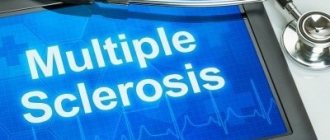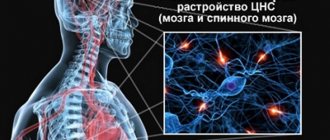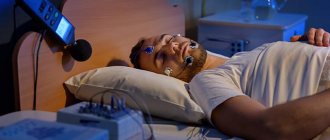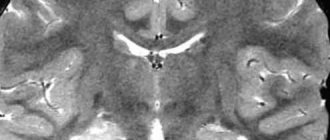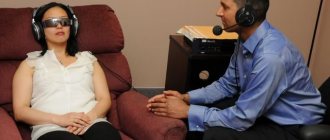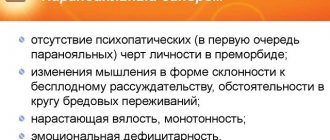When the central nervous system is damaged, a person develops diseases, for the treatment of which various drugs are used. The patient should know how antibiotics affect the body for multiple sclerosis and whether they can be taken if inflammatory processes develop.
Antibiotics may be helpful for multiple sclerosis.
Drug prevention of influenza and ARVI in multiple sclerosis
Preparations for the prevention and treatment of influenza, such as Amiksin, Arbidol, Amizon, Kagocel, Poludan, Dibazol, etc., are widely advertised in the autumn-winter period. are interferon inducers, i.e. stimulate the body to increase their production. At the same time, the body produces not only beta and alpha interferons, but also gamma interferon, which is very dangerous for people suffering from multiple sclerosis. An increase in the level of interferon gamma is always associated with an exacerbation of the disease. Therefore, taking such drugs is contraindicated in case of multiple sclerosis! This warning also applies to most herbal remedies for the prevention of ARVI. Taking medicines containing echinacea, ginseng, licorice or their extracts should also be taboo!
Drug prevention of influenza and ARVI is not the only way to protect yourself from these infections. Compliance with basic rules allows you not only to reduce the risk of infection, but, sometimes, to avoid it. Therefore, first, let’s understand the mechanism of spread of these infections.
The influence of antibiotics on the development of the disease
Numerous experiments have confirmed the possibility of taking antibiotics for MS. American scientists from the University of Wisconsin-Madison conducted experiments on rats. They were administered Minocycline, which is a modification of tetracycline. The drug helps reduce the severity of the pathology and blocks the increase in symptoms.
The experimental animals were individuals with autoimmune encephalomyelitis. This disease resembles human MS. Compared to specimens that did not receive drugs, experimental rats showed an improvement in their condition during the study period due to the prevention of the formation of neurological disorders and the further development of the disease.
Professor Ian Duncan explained the research findings. The antibiotic inhibits inflammatory processes in the central nervous system and blocks the development of cells that destroy the structure of the nerve fiber. Minocycline has many benefits and stands out among other drugs used to treat MS. The substance has a low cost and is produced in tablet form. It is taken only during the period of exacerbation of the disease.
Clinical trials of the drug are planned for early next year. The causes of multiple sclerosis are not clear, but acute respiratory infections and influenza can provoke its development and intensification.
How do influenza and ARVI viruses spread?
Influenza viruses and other acute respiratory viral infections are transmitted from person to person by airborne droplets (through coughing, sneezing, or talking) or through household contact (through objects used by the patient). The upper respiratory tract, less commonly the conjunctiva of the eyes and the digestive tract are the entry points for these infections.
It is believed that patients with respiratory viral infections can be contagious (i.e., infect other people) during the day before symptoms develop and further, during the first 5-7 days of the disease. Young children and people with weakened immune systems can infect others for longer than 5-7 days.
The ways of spreading infections require appropriate preventive measures.
General information about the disease
Multiple sclerosis is an autoimmune disease that statistically affects women twice as often as men. At the early stage of the disease, the symptoms are practically invisible, so multiple sclerosis is difficult to diagnose at the first stage, when with adequate therapy it could cause minimal damage.
The essence of this pathology is a disruption of the body’s immune system. The consequence of the failure is that the protective cells begin to attack the human brain and destroy it. The connections between the brain and the rest of the body are the first to suffer. In order to detect the disease in time and select adequate treatment, a comprehensive diagnosis is required.
In general, experts distinguish three main stages of the disease: mild, moderate and severe.
In the mild stage, exacerbations occur quite rarely; most of the time the patient is in a state of remission. During attacks, the symptoms are always the same, and they do not get worse.
In a state of moderate severity in the acute phase, patients develop new symptoms or intensify those that appeared earlier. The frequency of attacks is still low, and periods of remission can last several years.
Severe degrees are further divided into two stages: primary and secondary progressive. With the first, the symptoms gradually increase slowly, but constantly, while there are practically no exacerbation phases observed, the patient’s condition gradually worsens. During the second remission, they also last a long time, but they can be interrupted by a sudden and sharp deterioration in the patient’s condition.
Wash your hands!
It would seem like a simple preventive measure. Soap and water kills most germs in about 15 seconds, but it takes longer than you might think. Try saying the numbers from 21 to 36 out loud while washing your hands. Usually, this procedure took you less time, didn’t it?
After you have washed your hands, try not to touch the tap. This recommendation is especially important if you are in public spaces or if you have a sick person at home. By touching the tap with clean, damp hands, you risk reintroducing viruses to them. So try to use your elbow, forearm or paper towel to cover the water.
An alternative to soap and water is alcohol-based hand sanitizers. They do not need to be washed off, so they can always be on your desk, in your purse or briefcase, or in your car.
Therapy methods
Various antiviral drugs are used for treatment, the most popular of which is betaferon. The course of treatment with this drug is about two years. In patients receiving this therapy, the number of exacerbations significantly decreased, and symptoms in the acute stage became less severe. A decrease in inflammation was also observed. Another similar drug is riaferon. The course of treatment lasts about six months. A drug such as ribonuclease is also often used; it stops the reproduction of most viruses in the body. The drug dibazol is also used as an antiviral and immunomodulatory drug.
In addition, the therapy includes agents belonging to the group of interferon inducers: zymosan, proper-mil, prodigiosan, dipyridamole. In parallel, various non-steroidal anti-inflammatory drugs are often prescribed, for example, voltaren, indomethacin.
The complex of treatment measures also includes hormonal therapy, in which the patient is prescribed glucocorticoids. Among this group of drugs, the most popular are: synacthen-depot, etimizol.
Additionally, patients are prescribed ascorbic acid, which is involved in the natural synthesis of glucocorticoids, as well as various drugs that improve brain activity, such as: piracetam (nootropil), Actovegin, glutamic acid, solcoseryl, Cerebrolysin.
Actovegin is a drug for the treatment of multiple sclerosis
Blood plasma transfusion and desensitizing therapy are also considered effective. In this case, drugs such as calcium gluconate, tavegil, suprastin are prescribed.
Decongestants and diuretics are used much less frequently in the treatment of multiple sclerosis. Among diuretics, furosemide and hemodez are most often prescribed.
Cough cough...
Since childhood, many of us have been taught: “when you cough, cover your mouth... with your hands.” But such manipulation is a direct path to the spread of infection. When you cough or sneeze, viruses are released in your saliva and sputum. Covering our mouths with our hands, we “collect” them on our palms, and then...we greet employees with a handshake, take hold of pens, phones, dishes, etc., allowing viruses to freely find new “victims.” If you or your counterpart coughs or sneezes, try to cover your mouth and nose with disposable paper handkerchiefs, which can be thrown away immediately!
The Japanese walking around during a flu epidemic wearing masks (which must be changed every two hours) evokes sarcastic smiles. But their common sense is worth learning from.
This is how a small “set of rules for the prevention of influenza and ARVI” turned out, which will be useful not only for PC users. Follow the rules of personal hygiene, try, if possible, to limit contact with other people for a while, drink more fluids, do not deny yourself positive emotions and be healthy!
What to do if you have the flu with MS
Many people are confused because they don’t know how to treat flu in multiple sclerosis so as not to harm the patient. Traditional treatment of ARVI in multiple sclerosis includes the following:
- The first measure is to isolate the patient from surrounding healthy people, especially children, since they have weaker immunity. Also, a person must wear a protective gauze bandage or mask (it must be changed to a new one every three hours, otherwise there will be no effect).
- If you have a runny nose, you should regularly rinse your nasal cavity with special aerosols based on sea water. They will get rid of accumulated germs and bacteria. This needs to be done every two hours. If you are intolerant to traditional medicinal nasal drops, you can also instill a tincture of onion and honey into your nose. It has very effective bactericidal properties and will quickly help eliminate a runny nose.
- To strengthen the immune system, the patient is recommended to take vitamin complexes . This could be Aevit and its derivatives.
- It is very important for a person in such a state to eat properly. At the same time, the diet should be enriched with fruits, vegetables and nuts. The basis of the menu should be dishes rich in fiber. Honey, a decoction of dried fruits and rose hips are also useful. All this will help the patient recover faster and strengthen the immune system.
- For dry pharynx and cough, rinsing is indicated. It needs to be repeated every two hours. To do this, you can use chamomile decoction, saline or soda solution. At the same time, it is important not to swallow rinses, but simply treat the oral cavity with them.
- If you have difficulty breathing, you can use vasoconstrictor drugs in the form of nasal sprays, but they must be prescribed by your attending physician (some drugs in this group may have a negative effect on the condition of the patient with MS).
- For dry cough, you can use mucolytic herbal preparations (Mukaltin). They do not cause any side effects, so they are used for almost all patients.
- For wet coughs, you can use herbal syrups (Gerbion). It is advisable that they be without sugar and artificial additives.
- At high temperatures, you need to bring it down with antipyretic agents . In this case, you should be extremely careful, since not all medications in this group are allowed for patients with multiple sclerosis. They should be selected by the attending physician individually.
High temperatures need to be brought down with antipyretics
It is much more difficult to figure out what triggers the onset of such diseases.
Scientists have not yet come to a consensus on where diseases originate. However, there are two points of view regarding this issue. From one point of view, there is every reason to believe that the cause of the development of these diseases is the rare consequences of simple infections. From another point of view, there is an assumption that the development of diseases is affected by certain disturbances in the functioning of genes and their mutations. For example, scientists from Britain have found that multiple sclerosis often begins to develop in people who have an active Rab32 gene.
It should be noted that Larisa Litvinova and her colleagues determined how it is possible to stop the development of multiple sclerosis by paying attention to the brightest, most famous, most long-awaited for many people and unique of its kind process of the birth of a new body. The immune system comes to terms with its presence. It is the fetus inside a woman.
According to scientists, the fetal gene consists of 50 percent genetic material inherited from the father. It is this gene that contains the instructions by which protein molecules that are unfamiliar to the woman’s immune system are assembled. Considering the specifics of a woman’s immune system, when protein molecules enter her environment, she must begin to protect herself from the cells of the fetus. But, however, in reality this does not happen. Meanwhile, the placenta produces special hormones. These hormones affect the woman's immune system and force the immune system not to attack the cells of the fetus. Moreover, hormones also protect the fetus from various types of infections.
The hormones that develop in the female body during pregnancy have interested biologists. It is the study of the specifics of their work, the study of all their secret properties and capabilities that will make it possible to produce a medicine for multiple sclerosis. As a result of the disease, the immune system considers brain cells and other tissues to be non-native.
In an effort to find a cure for such diseases, and fascinated by the hidden properties of pregnancy hormones, Russian biologists, in order to achieve their goal, began to diligently study the interaction of these hormones on immune cells. The influence of various pregnancy hormones on the behavior of immune cells that are already familiar with real and non-real pathogens, but have never encountered them, has been fully studied. It was thanks to their observations of the reaction to hormones that Russian scientists tried to discover a substance that could suppress immune cells, but did not cause harm and did not completely suppress the immune system.
As you know, Russian biologists have recently made important steps in finding a cure for multiple sclerosis. They made the medicine and conducted a study on its effects on volunteers.
It is presented in the form of microscopic balls, which are surrounded by protection from synthetic molecules. Once ingested, they disintegrate over time. The medicine itself consists of fragments of myelin that help prevent the immune system from pushing away nerve cells. At a scientific conference held in Moscow dedicated to multiple sclerosis and other autoimmune diseases, scientists reported that the production of this medicine is progressing. In addition, other immunological factors that affect the nervous system and other organs are being studied.
Today, preparations for the next phase of clinical trials are in full swing. Scientists hope for the success of their experiments. According to scientists, with a good pace of work, the medicine may be on sale within three years.
How does a cold or flu affect MS?
No one likes to be unwell, but common illnesses like colds and flu are something we have to live with. It has been suggested that colds often serve as a periodic reset of the immune system. Multiple sclerosis is neither a common nor natural disease. Combining the common with the unnatural, we get an unusually severe disease in its essence and duration. The last thing we need is any additional hit to our immune system.
The immune system processes in MS are either already responding inappropriately or are putting the body at risk on a daily basis.
When you throw a grenade at a monkey, two things happen:
- Firstly, the body is not able to effectively and purposefully respond to the disease. This usually results in the duration of the disease having a longer period of time. With a weakened ability to fight the disease, existing symptoms caused by MS, such as fatigue, muscle pain, numbness and heat intolerance, may become more pronounced.
- Secondly, common diseases can “start” a relapse of MS (cause an exacerbation). An overly excited immune system trying to solve a problem can lead to additional problems that have nothing to do with the original illness.
“This happened after the flu last year. After recovering from this very disease, I discovered that new neurological problems had arisen associated with severe headaches, visual disturbances and constant ringing in the ears. I had an exacerbation of MS after an illness” - a patient with MS .
“Now, when I am recovering from a common illness, I notice everything unusual that goes against the usual symptoms of well-known diseases (for example, a cold), otherwise, if an unusual symptom lasts longer than a day, I know what to do: 1) call the doctor, 2) take a course of hormones as quickly as possible,” says Andrey (he has had MS for 11 years) .
How to cope with exacerbations of MS can be read in the article “Exacerbation of multiple sclerosis, what to do. How to prevent exacerbation."
The best we can do is try to stay healthy, both mentally and physically, and look to the future patiently.
LEAVE IT IN THE COMMENTS
Do you often get colds? Have you noticed that they are affecting your MS? Do you prevent such diseases? What does your doctor advise?
Treatment of multiple sclerosis
R
Multiple sclerosis (MS) is one of the most common diseases of the central nervous system (CNS).
In Russia alone there are more than 150 thousand such patients, most of whom are people of young working age. MS is an autoimmune disease, the main pathophysiological mechanism of which is autoaggression against myelin of the central nervous system
. However, as recent studies have shown, in MS, not only the sheaths of the CNS conductors, but also the axons themselves undergo morphological changes. It is axonal degeneration that causes the development of brain atrophy and irreversible neurological deficit, leading to disability in patients. Particularly important is the fact that axonal damage begins already at the initial stage of the disease, which dictates the need for early active therapy for MS.
Unfortunately, even today this disease remains incurable. But if previously therapeutic care for patients with MS was limited to attempts to stop exacerbations of the disease and provide symptomatic treatment, by now there have been ways to influence the course of the disease. This became possible thanks to the introduction of preventive (modifying) therapy into practice. The use of these drugs leads to a reduction in the number of exacerbations of the disease, makes them less pronounced and slows down the development of disability, which is the main goal of treating patients with MS. Thus, the modern approach to the treatment of MS consists of preventing exacerbations, stopping them and providing symptomatic therapy.
Preventive (modifying) therapy
Drugs that reduce the frequency of exacerbations of MS include b-interferons
and
Copaxone
.
The use of b-interferons, which have antiviral and immunomodulatory effects, in MS is based on the assumption of the role of persistent or latent viral infection in people with an altered immune system in the occurrence of this disease. b-interferons have a very wide spectrum of action, the main directions of which in the treatment of MS are the effect on viral replication and stimulation of the production of anti-inflammatory factors.
β-interferons used in the treatment of MS include betaferon, Avonex and Rebif. All these drugs significantly reduce the frequency of exacerbations in relapsing-remitting MS and slow down the increase in disability. Their use leads to a reduction in the number of hospitalizations and courses of hormonal therapy. The effectiveness of these drugs is estimated at approximately 30%.
The greatest experience has been accumulated in the treatment of PC with betaferon
. This is a recombinant b-interferon-1a produced by a culture of Escherichia coli. Betaferon not only reduces the number of exacerbations in relapsing-remitting MS, but also slows down the development of the disease in its secondary progressive form, occurring both with and without exacerbations. The drug is administered by patients independently, subcutaneously, at a dose of 8 million International Units (IU). In patients who do not respond to standard doses of betaferon, with a high degree of disability, a higher dose of 12 million IU may be prescribed.
Avonex
– human recombinant b-interferon-1a, produced by a mammalian cell culture. This drug has the advantage that it is administered once a week. It is used intramuscularly at a dose of 6 million IU.
Rebif
– also b-interferon-1a, administered subcutaneously, 3 times a week. It can be used in two dosages - 6 million ME and 12 million ME. The difference in the effectiveness of treatment with Rebif at different dosages is statistically insignificant.
When treated with b-interferons, the frequency of exacerbations decreases most significantly in the 2nd year of treatment, that is, the effectiveness of the drug accumulates over time. Prescription of Betaferon and Rebif is recommended for patients with disability up to 5.5 points on the EDSS (Expanded Disability Status Scale), Avonex - up to 4.0 points, but in any case the patient must be walking.
All b-interferons cause a fairly wide range of side effects, especially at the beginning of treatment. The most significant of them are local skin reactions (sometimes up to necrosis) and flu-like symptoms (fever, malaise, myalgia) - “interferon flu”. However, these phenomena disappear over time, and their occurrence can be prevented. Pain and skin reactions at the injection site can be reduced by following the rules for their administration (changing the areas of injection of the drug), wiping the area with a piece of ice before and after the injection. Skin reactions are less likely to occur if the drug is thoroughly dissolved and warmed to room temperature before administration. “Interferon flu” occurs at the beginning of treatment in most patients, but later it goes away in almost all of them, which is important to explain to the patient. In addition, these symptoms can be easily neutralized by administering the drug at night and taking paracetamol an hour before the injection or taking ibuprofen or pentoxifylline 2-3 times a day. In order to prevent the occurrence of side effects, it is also possible to reduce the dose by two times during the first administrations of the drug.
Other significant side effects of betaferon are that it increases spasticity and can cause depression. An increase in muscle tone is observed in those patients in whom it was quite pronounced before the start of therapy. If spasticity increases, the dose of muscle relaxants should be increased. The development of depression requires the prescription of antidepressants or even a break in treatment.
Avonex has fewer side effects. This may be explained by the fact that it is administered intramuscularly rather than subcutaneously. The skin is an active immune organ with immunocompetent cells that mediate humoral and cellular immune responses. Muscles are immunologically “quiet”.
Another preventive therapy drug, different in its mechanism of action from b-interferons, is Copaxone
.
This is the only drug to date that has an antigen-specific effect
. It consists of 4 amino acids - glutamine, lysine, alanine and tyrosine. The drug suppresses the cell-mediated response to one of the main autoantigens of the central nervous system - myelin basic protein. The interaction of T cells with Copaxone, instead of myelin basic protein, leads to the formation of suppressor Copaxone-specific T cells. These cells, penetrating the central nervous system, secrete anti-inflammatory factors that inhibit the development of the immune response leading to demyelination. The drug is administered daily, subcutaneously, at a dose of 20 mg; it causes only minor adverse reactions in the form of redness and thickening at the injection site, and a small number of patients experience systemic post-injection reactions in the form of general hyperemia, a feeling of tightness in the chest, shortness of breath, and palpitations. These phenomena go away on their own within a few minutes, without requiring medication correction.
To date, there is no experience of joint administration of b-interferons and Copaxone, but the safety and effectiveness of their use against the background of glucocorticoid therapy (in case of an exacerbation) has been proven.
The most important questions that arise when prescribing preventive therapy are: who should be given this treatment, when to start it and when to stop it, what is the indicator of ineffectiveness of this treatment?
Currently, there are undoubted indications for the use of modifying therapy
are reliable MS (see table), relapsing course of the disease (for betaferon also secondary progressive MS), patient age from 18 to 50 years, mild disability. Such treatment should be started as early as possible, since axonal damage, which subsequently leads to the development of an irreversible neurological defect, begins already at the initial stage of the disease. Treatment with these drugs should be stopped or replaced if side effects are intolerable or if treatment is ineffective. The lack of effect should be considered the need for 3 courses of glucocorticoid therapy over 1 year or a steady increase in disability over 6 months of treatment.
It is impossible to predict whether any of the preventive therapy drugs will have an effect on a given patient.
When prescribing these drugs, it is necessary to give the patient realistic prospects, warn about possible side effects, and teach injection techniques. Intravenous administration of immunoglobulin G has been proposed as an alternative immunomodulatory therapy.
. It also affects the frequency of exacerbations and the increase in disability. The drug is administered at a rate of 0.2-0.4 g/kg for 5 days, and then at the same dose once every 2 months. Other schemes for its use are also proposed - 1 g/kg monthly. However, the use of large doses of immunoglobulin is associated with an increased risk of cardiovascular and renal complications, as well as thromboembolism. In the first hours after the infusion, headache, myalgia, chills, and fever may occur. These phenomena can be stopped by reducing the rate of drug administration, using analgesics and antihistamines. Intravenous immunoglobulin has been successfully used in pregnant women with MS to prevent postpartum exacerbation.
Relief of exacerbations
Recently, treatment of severe exacerbations of MS with high doses of methylprednisolone
replaced the use of adrenocorticotropic hormone and its synthetic analogues.
Most exacerbations coincide in time with the formation of new active foci of demyelination, detected by MRI examination in the brain and spinal cord, which indicates a new wave of inflammation. The use of high doses of glucocorticoids accelerates their disappearance. However, after cessation of hormonal therapy, a new outbreak of disease activity may occur, which is also reflected in MRI findings. This may be due to the rate of hormone withdrawal, so the most optimal is to carry out “pulse therapy” with intravenous administration of methylprednisolone and subsequent transition to oral
prednisolone for several days: for 3-7 days, 1-2 g of methylprednisolone (the drug administered with 400-500 ml of saline solution for 1-2 hours), then oral prednisolone is prescribed - 4 days at 200 mg, 4 days at 100 mg, 2 days at 50 mg and then, reducing the dose every day by 10 mg . Other regimens for the use of prednisolone after intravenous administration of the hormone are also proposed - 2 days of 80 mg, 2 days of 60 mg, 2 days of 40 mg, followed by a daily dose reduction of 5-10 mg. This treatment is usually well tolerated. The drug is always prescribed at a time in the first half of the day. The most common side effects are insomnia and mild euphoria, anxiety, metallic taste in the mouth during infusion, increased appetite, nausea, gastrointestinal disorders, headaches, myalgia, hiccups. More serious complications occur less frequently - the development of psychosis, cardiac arrhythmias, hyperglycemia. This requires quick and qualified correction, so treatment with glucocorticoids must be carried out in an inpatient setting. To prevent the ulcerogenic effect of corticosteroids, H2-histamine receptor blockers should be prescribed simultaneously with them. To replenish the loss of potassium and calcium, asparkam, panangin are prescribed, and it is recommended to eat bananas. In addition, you should limit fluid intake and use potassium-sparing diuretics (spironolactone). Sometimes, after discontinuation of corticosteroids, there is a deterioration in the condition, in these cases it is necessary to re-prescribe 20-40 mg of prednisolone and again slowly reduce its dose.
Long-term use of small doses of steroids is not indicated, since a variety of known side effects are very likely to occur in the absence of significant effectiveness. Isolated (without intravenous administration) oral use of fairly high doses of prednisolone (1-1.5 mg/kg) gives short-term results, but, compared with intravenous pulse therapy, leads to greater disease activity in the future.
Hormonal pulse therapy not only stops exacerbations of MS, but also slows down the development of both relapsing-remitting and secondary progressive MS. Patients with this form of the disease can undergo this treatment 1-2 times a year or be administered every 2 months with 500 mg of methylprednisolone for 3 days. Intravenous hormonal pulse therapy is also indicated in the treatment of monosymptomatic manifestations of MS, in particular retrobulbar neuritis. The very common treatment with retrobulbar administration of dexamethasone is currently considered inappropriate by many researchers. One of the regimens for the treatment of retrobulbar neuritis may be as follows: intravenously for 3 days, 250 mg of methylprednisolone in physiological sodium chloride solution is administered intravenously every 6 hours, then oral prednisolone is prescribed for 10 days at a rate of 1 mg/kg and for subsequent 3 days quickly reduce this dose. If retrobulbar neuritis is accompanied by pain in the eyeball, nonsteroidal anti-inflammatory drugs may be prescribed.
In patients with acute, severe attacks of MS that do not respond to corticosteroid therapy, plasmapheresis
. It can also be combined with hormonal and other immunosuppressive therapies. When using this combination treatment for 2 weeks, 1.5 plasma volumes are exchanged up to 5 times per session; after the plasmapheresis procedure, 500-1000 mg of methylprednisolone with 400 ml of physiological sodium chloride solution is administered intravenously. A contraindication to the use of plasmapheresis is peptic ulcer disease. The most common side effects of plasma exchange transfusion are arterial hypotension and perioral paresthesia. Plasmapheresis is more effective for severe attacks of MS than for mild ones.
Despite the available data on the positive effect of some cytostatics on the course of MS (azathioprine, methotrexate, cyclophosphamide, cyclosporine A), it should be recognized that their use is justified only if hormonal and other immunomodulatory therapy is ineffective. With little therapeutic effect, these drugs cause a lot of side effects, and their use is strictly contraindicated in patients with a good prognosis.
During exacerbations, as well as in remission, “metabolic” therapy is prescribed, including nootropic drugs
(Cerebrolysin, piracetam, pyritinol),
lipotropic
(Essentiale),
vascular
(pentoxifylline, vinpocetine) and
vitamin preparations
(group B and tocopherol). The expediency of their use is determined by the need to maintain axonal function and prevent the development of axonopathy.
Symptomatic therapy
It is extremely important to carry out active, adequate symptomatic therapy in the period between exacerbations. For patients with primary progressive MS, it is often the only way to alleviate their condition. Currently, there are opportunities for real impact on the main manifestations of the disease.
For many patients with PC, general fatigue
, occurring in 75-92% of cases.
This symptom is often underestimated and is often mistaken for a “whim” or a manifestation of “neurosis.” Fatigue is not related to the degree of paresis; it is significantly worsened in the heat and when taking a hot bath. To correct it, it is very important to continue an active lifestyle and do dosed physical exercise
(excessive physical activity can aggravate this symptom).
The drug of choice for the treatment of fatigue is amantadine
.
In most cases, a sufficient dose is 100 mg per day. To increase the duration of its therapeutic effect, “vacations” are recommended for 1-2 days a week. If it is ineffective, you can use selegiline
, a dopaminergic drug, at a dose of 5 mg/day.
A common symptom of MS is intention and postural tremor.
.
Trembling can be very pronounced and occur even with the intention of movement, even before it begins, being the main disabling factor. Unfortunately, methods for correcting tremor in MS are ineffective. Isoniazid
has some positive effects , which has a greater effect on postural than on intentional tremor.
Isoniazid is used at a dose of 800-1200 mg/day in combination with 100 mg of pyridoxine (to prevent the development of polyneuropathy). Side effects of isoniazid include reversible liver dysfunction, drowsiness, fever, rash, nausea, and increased bronchial secretion. These phenomena can occur already with a dose of the drug of 600 mg and, given the less noticeable effect of isoniazid on tremors, they often force one to abandon its use. Hexamidine, carbamazepine, and clonazepam have a minor effect on tremor. Ondansetron
, which blocks central and peripheral 5HT3 receptors and is thus a serotonin antagonist, has also
been proposed for the treatment of tremors in MS Attempts at drug correction of tremors should be complemented by various rehabilitation methods - coordination exercises; with severe hand tremor, you can use fixing small weights of 400-600 g on the wrists. However, this can increase existing weakness and fatigue, and sometimes increase the tremor. In some cases, with severe tremors, stereotactic operations
- thalamatomy or stimulation of the ventral intermedial nucleus of the visual thalamus.
One of the most common and disabling symptoms of PC is increased muscle tone of the spastic type.
.
Spasticity can make movement even more difficult than weakness. Over time, increased tone in flexor muscle groups can lead to the formation of contractures. The basis for the treatment of spasticity should be exercise therapy, massage and physiotherapy
.
Pharmacological treatment only complements these methods and does not replace them. Before starting antispastic therapy, its possible consequences in the form of increased weakness must be assessed. The general rule for this treatment is to start with small doses and gradually increase them and use the minimum dose at which the desired effect is obtained. If a patient has painful muscle spasms at night, it is advisable to prescribe a muscle relaxant once at night. Baclofen
is most commonly used to reduce spasticity .
This drug is partially metabolized in the liver, so liver function should be checked before starting treatment and every 6 months. The initial dose of baclofen is 5 mg/day, the maximum is 100 mg/day. It is advisable to prescribe the initial dose (as well as increase it) at night to reduce side effects: drowsiness, fatigue, weakness, nausea, dizziness. It must be remembered that abrupt withdrawal of baclofen can provoke seizures. Another common agent for reducing spasticity is tizanidine
.
It is also metabolized in the liver, and therefore monitoring of its functions is necessary before starting therapy and then after 1, 3 and 6 months of treatment. The initial dose of tizanidine is 2-4 mg/day, it can be doubled every 3 days, but the total daily dose should not exceed 36 mg. The drug may cause dry mouth, drowsiness, and dizziness. Drowsiness occurs more often with tizanidine than with baclofen, but increased weakness, on the contrary, is less common. diazepam
in addition to these drugs .
Its initial dose is 2 mg/day, the maximum is 40 mg/day. Side effects of diazepam include drowsiness and cognitive impairment. Abrupt withdrawal can also cause epileptic seizures. For severe tonic spasms, botulinum toxin A
. The drug is injected directly into the spasming muscles. Paresis of these muscles begins to develop 24-72 hours after injection of the toxin, reaching a maximum on days 5-14, and lasts 12-16 weeks. When oral administration of muscle relaxants is ineffective, endolumbar administration of baclofen and surgical treatment methods are used to treat significant spasticity in immobilized patients: intersection of the tendons of the adductor muscles of the thighs, anterior and posterior roots of the spinal cord.
More than half of patients with MS at a certain stage in the development of the disease experience pain, varying in nature and intensity. Pain syndromes in PC
They can be acute (trigeminal neuralgia, tonic spasms), subacute (with retrobulbar neuritis, hemorrhagic cystitis) and chronic.
Half of all pain syndromes are chronic pain in the form of dysesthesia in the limbs and back pain. Dorsalgia is most often caused by impaired statics with the formation of a pathological posture. Treatment depends on the nature of the pain syndrome. An effective treatment for trigeminal neuralgia in MS, as well as idiopathic neuralgia, is carbamazepine
.
Other anticonvulsants also have a good effect - phenytoin, gabapentin and lamotrigine
.
Pain due to retrobulbar neuritis is well relieved by the use of analgesics, non-steroidal anti-inflammatory drugs and, if necessary, corticosteroids. For chronic burning neuropathic pain, the most common medications are tricyclic antidepressants and GABAergic drugs. Combination therapy
with clomipramine (10-25 mg/day), haloperidol (0.5-1.0 mg/day) and carbamazepine (100-200 mg/day) has a good effect on this kind of pain Back pain is well relieved by non-steroidal anti-inflammatory drugs. To correct pathological posture and strengthen paravertebral muscles, massage, physiotherapy, and exercise therapy can be useful. Benzodiazepines and anticonvulsants are used to relieve painful muscle spasms. Pain at injection sites when using beta-interferons is relieved by topical application of lidocaine, and diffuse muscle pain (“interferon flu”) is well controlled by non-steroidal anti-inflammatory drugs. Carbamazepine is effective for painful bladder spasms. Psychogenic pain responds to treatment with antidepressants. MS headaches, which most often have the character of tension headaches, are treated in the same way as headaches of this type in patients without MS.
Depression is a very common symptom of PC.
.
Apparently, depression in PC is multifactorial. It can be caused by a reaction to the disease, the disease itself, or side effects of the therapy. When treating depression, a combination of medication and psychotherapy is desirable. Amitriptyline
is most often prescribed (initial dose - 25 mg, therapeutic dose - 150-300 mg).
But other antidepressants are also effective in MS, as well as in depression of other origins, although their anticholinergic side effects (dry mucous membranes, impaired accommodation, headache, orthostatic hypotension, tachycardia) in this disease may occur at lower dosages. It should also be taken into account that manifestations of anticholinergic activity can aggravate urinary retention, blurred vision, and difficulty swallowing (due to dry mouth). Therefore, for the treatment of depression in patients with MS, it is recommended to use selective serotonin reuptake inhibitors that lack anticholinergic properties - trazadone
(initial dose - 50 mg, therapeutic - 150-600 mg),
sertraline
(initial dose - 25 mg, therapeutic - 50 mg),
fluoxetine
(initial and therapeutic doses - 20 mg),
paroxetine
(initial dose - 20 mg, therapeutic dose - 50 mg), etc. These drugs are effective and most often well tolerated. Treatment should begin with minimal initial doses, slowly increasing them after 3-5 days. It takes several weeks to achieve the desired result. If after 4-5 weeks there is no effect from treatment or after 6-8 weeks only a slight effect of the drug is observed, as well as in the event of difficult-to-tolerate side effects, it is necessary to change the drug. If the effect is good, therapy should be continued for up to 6 months, and then the patient’s condition should be re-evaluated to decide whether to discontinue the antidepressant or continue taking it.
For anxiety disorders, benzodiazepines can be prescribed for short-term use (diazepam - 2-10 mg/day, alprozalam - 3-4 mg/day, clonazepam - 4-6 mg/day, lorazepam - 3-4 mg/day). They are especially useful for a short period when informing a patient of the diagnosis of PC.
The course of MS is often accompanied by various paroxysmal syndromes
, which can be sensory, motor and mixed.
These include Lhermitte's symptom, Utgoff's symptom, paroxysmal itching, facial myokymia, tonic spasms, dysarthria, convergence spasm, etc. These paroxysmal symptoms are characterized by short duration (usually no more than 2 minutes) and high frequency - up to several hundred per day, and are often provoked by certain trigger factors - movement, stress, sensory stimuli, hyperventilation. All these paroxysmal disorders in most cases respond well to treatment even with small doses of carbamazepine
- 50-100 mg / day or
gabapentin
- 100-300 mg / day. If necessary, the dose can be increased until the desired result is achieved. Second-line drugs for the treatment of such disorders are phenytoin, phenobarbital, clonazepam, amitriptyline, etc. If such treatment is ineffective, hormonal pulse therapy is indicated.
The vast majority of patients with PC have urinary disorders
.
They are often the main cause of mood disorders, significantly reducing quality of life. From a clinical point of view, urinary disorders in patients with MS can be divided into difficulties with urinary retention and difficulties with emptying the bladder. There is often a combination of these disorders. Most patients with urinary problems can be helped conservatively. For imperative urination, the following are prescribed: tolterodine
(4 mg),
amitriptyline
(25-50 mg),
nifedipine
,
oxybutynin
(2.5-10 mg).
If there are difficulties emptying the bladder, an a-blocker is prescribed - terazosin
- 5-10 mg;
A side effect of this drug is the development of orthostatic hypotension. You can use drugs that reduce tension in the muscles of the external sphincter of the bladder - tizanidine
(8 mg),
diazepam
. If conservative therapy is ineffective, surgical treatment is indicated.
When complaining of constipation, you need to find out from the patient how often bowel movements occur and explain that daily bowel movements are not necessary. In most cases, to normalize intestinal activity, it is enough for patients to follow a certain diet and consume more fluid (which is not always possible in cases of simultaneous imperative urge to urinate) or take laxatives.
Following urinary disorders in PC, sexual disorders
. These disorders can be a consequence of damage to certain parts of the central nervous system, arise due to other manifestations of the disease (fatigue, spasticity, paresis), and also have a psychological basis. Sexual disorders in men are manifested by erectile dysfunction, ejaculation, and decreased libido. In women, they include the inability to achieve orgasm, insufficient lubrication and, less commonly, painful intercourse. Sexual disorders in women can also be associated with impaired sensitivity in the genital area, as well as high tone in the adductors of the hips.
Since sexual disorders in patients with PC may be psychogenic in nature, consultation with a sex therapist and psychologist is of great importance. You should also take into account what medications the patient is receiving, since many of them can affect sexual function. A side effect of Lioresal can be a decrease in libido, benzodiazepines - impaired ejaculation, tricyclic antidepressants - impaired erection and lubrication. Sildenafil has recently been increasingly used to treat sexual disorders in men.
.
Sildenafil is taken in a dose of 50-100 mg 1 hour before sexual intercourse. Side effects of this drug include headache, nasal congestion, facial flushing, and dyspepsia. Sildenafil is absolutely contraindicated in patients with cardiac pathology. It is possible to use devices for vacuum erection. Vasoactive drugs are also used: intraurethral suppositories with prostaglandin E1
and injections of this drug or papaverine into the penis. Side effects of this method may include pain at the injection site and fibrosis of the penis. It should be noted that although the initial effectiveness of this method is very high, after 2 years of its use it decreases significantly. The lack of lubrication in women can be compensated by the use of various intravaginal moisturizers, and a decrease in the orgasm threshold is achieved by the use of vibrators.
And, of course, at all stages of the disease, both in inpatient and outpatient settings, drug therapy should be supplemented with neurorehabilitation methods
– massage, physiotherapeutic procedures, exercise therapy and the use of various devices for the correction of movement disorders. Social assistance for PC patients is also extremely important.
The list of references can be found on the website https://www.rmj.ru
Tolterodine –
Detrusitol (trade name)
(Pharmacia)
Literature:
1. Gusev E.I., Demina T.L. et al., Immunomodulatory treatment of multiple sclerosis. Moscow, JSC Chertanovskaya Printing House, 1992.
2. Gusev E.I., Demina T.L., Boyko A.N., “Multiple sclerosis”, M., 1997.
3. Demina T.L., Gusev E.I. et al., The first experience of using the drug Copaxone in the treatment of relapsing-remitting forms of multiple sclerosis in Russia. Mater, to Region, owls. “Issues of diagnosis and treatment of demyelinating diseases of the nervous system”, M., 1999, pp. 127-129.
4. Demina T.L., Zavalishin I.A. and others. Aspects of pathogenetic therapy of multiple sclerosis. Mater, int. conf. “Improving the quality of life of disabled people with multiple sclerosis in European countries.” Samara, 1999, pp. 24-28.
5. Zavalishin I.A., Peresedova A.V., Zhuchenko T.D. From pathogenesis to treatment of multiple sclerosis. Mater, to Region, owls. “Issues of diagnosis and treatment of demyelinating diseases of the nervous system.” M., 1999, pp. 28-38.
6. Summer school on multiple sclerosis. Amsterdam, 1998
7. Multiple sclerosis. Selected Issues of Theory and Practice,” ed. I.A. Zavalishina, M., 2000.
8. Schmidt T.E., Zhuchenko T.D. Copaxone is a new drug for the treatment of multiple sclerosis. Bulletin of Practical Neurology, M., 1998, 4, pp. 15-18.
9. Schmidt T.E., Zhuchenko T.D., Lukyanova K.S. Prognostic value. differential diagnosis and treatment of retrobulbar neuritis in multiple sclerosis. Mater, to Region. owls “Issues of diagnosis and treatment of demyelinating diseases of the nervous system.” M., 1999, pp. 91-98. lO.Aisen ML et al. The effect of mechanical damping loads on disabling action tremor. Neurol., 1993,43,1346-1350.
11. Alam M. et al. Methylprednisolone in multiple sclerosis. A comparison of oral with intravenous therapy. J. Neurol. Neurosurg. Psych..1993,56,1219-1220.
12.Alter M. et al. Practice advisory on selection of patients with MS for treatment with betaseron. Neurology, 1994,44,15370-1540.
13.Barnes MP et al. Intravenous methylprednisolone for MS in relapse. J. Neurol..Neurosurg., Psych., 1985, 48, 157-159.
14.Bass V. et al. Tizanidine versus baclofen in the treatment of spasticity in patients with MS. Can.J.Neurol. Sci.,1988,15,15-19.
15.Beck RW Corticosteroid treatment of optic neuritis. A need to change treatment practices. Neurol., 1992, 42, 1133-1135.
16. Blaivas JG Management of bladder dysfunction in MS. Neurol., 1980, 30, 12-18.
17.Bozek S.V. et al. A controlled trial of isoniazide therapy for action tremor in MS. Neurol., 1987, 234, 36-39.
18.Canadian MS Research Group. A randomized controlled trial of amantadine in fatigue associated with MS. Can.J. Neurol.Sci.,1987,14,273-278. 19-Chezzi A. Sexual dysfunction in MS. Int.MSJ.5,2,45-53.
20. Fazecas F. et al. Intravenous immunoglobulin trials in MS. Int. MSJ, 6,1,15-21.
21.Fowler CJ et al. Treatment of lower urinary tract dysfunction in patients with MS. J. Neurol., Neurosurg., Psych., 1992, 55, 986-989.
22.Multiple sclerosis. Eds. Paty DW, Ebers GC, Philadelphia, 1997.
23.MS. Ed. Kesselring J., 1997.
24.Multiple Sclerosis Therapeutics. Eds. Rudick RA, Goodkin DE.2-nd ed., London, 2000.
25.Noth J. Trends in the pathophysiology and pharmacotherapy of spasticity. J. Neurol., 1991, 238, 131-139.
26.0sterman PO,Westerberg CE Paroxysmal attacks in MS. Brain.1975,38,189-202/
27. Polman Ch.H. Interferon beta Ib and secondary progressive MS. Int. MSJ,5.2,40-43.
28. Poser CM et al. New diagnostic criteria for MS. Guidelines for research protocol. Ann. Neurol., 1984, 13, 227-231.
29.Schapiro RT Symptom management in MS/Ann. Neurol., 1994, 36, 5123-5129.
30. Stenager E. et al. Sexual function in MS. 10' Congress of the European Committee for treatment and research in MS. Greece! 994/
31.Walter EU et al. Management of side-effects of beta-interferon therapy in MS. Int. MSJ.5,2,65-75.
32. Whitlock FA, Siskind MM Depression as a major symptom of MS. J. Neurol-.Neurosurg., Psych., 1980, 43, 861-865.
33. Weiner HL, Dawson DM Plasmopheresis in MS. Neurol., 1980, 30, 1029-1033.
